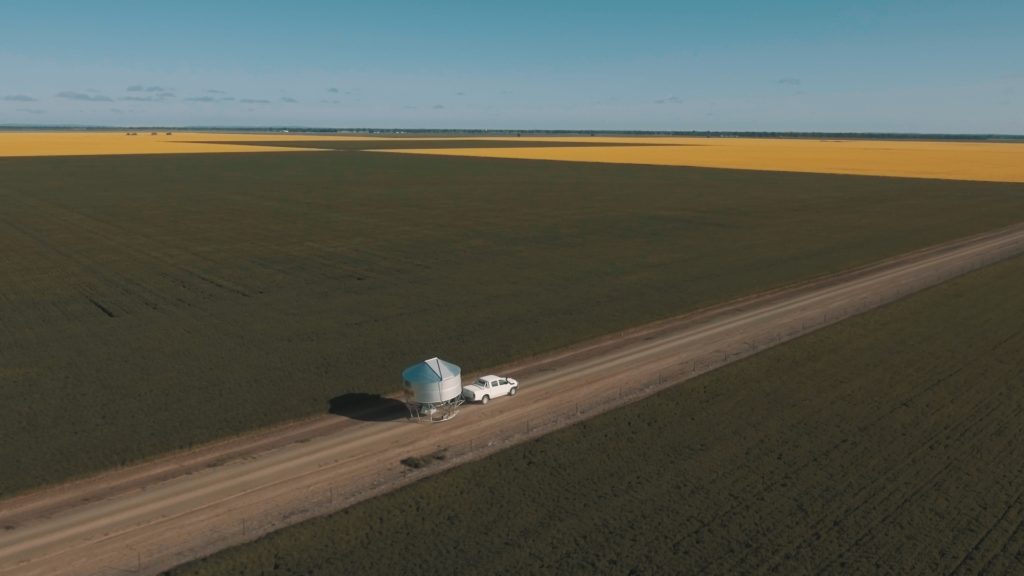Harvest 2020

With much of Australia pulling out of drought conditions with what many are saying is the best start to a season they have seen in 10+ years, the focus is now on weather being kind to us, and the storage options that growers will look to for optimising their greatest resource, their grain.
With some of the most harshest drought conditions experienced in many, many years still in the forefront of the memories of many, growers are looking to mitigate and drought proof their farming enterprises as much as possible for the coming years, and this sees grain storage at the forefront.
Whether it be silage bunkers, grain bags, sheds, or silos, growers are getting far more innovative and technologically savvy when it comes to grain storage, with many seeing the benefits of on farm storage giving them an advantage, especially when times are tough.

Recently, the crippling drought that Australia experienced, showed roadblocks to our logistics system, the bulk storage system and governments inability to recognise the extreme conditions being experienced by our farmers, and formulate a timely plan to combat this.
Now, also experiencing the horrendous effects from the worst bushfires we have seen on record, and now a global pandemic that is seeing Australia come to grips with extreme and necessary lockdowns, we are again seeing industries and businesses going to the wall.
But what many see as a huge disruption to their lives, farmers and growers see situation normal, as they live with the isolation and distance from others in their everyday farming lives. They are just getting on with it.
Agricultural is not only a necessity for us now, it’s our lifeblood! We have all seen the effects that the Covid19 pandemic has had on our global imports and exports. While many businesses can recover from short hibernation periods, our farmers cannot afford to have the season interrupted. Sowing, and the ability to get the necessary requirements in a timely manner is paramount. Seed, fertiliser, herbicides and insecticides as well as machine parts and spares are critical.
So, having a longer-term plan in place, and completing preventative maintenance is a serious and necessary requirement to enable the agricultural continuity.
The same applies to your storage requirements. With such a strong start to the season, and above average rainfall predicted right through the growing period, the 26-28mmt wheat forecast throws up another challenge- storage.

With average approx figures of on farm storage being around 40%, and an estimated crop production of 26-28mmt, everyone needs to ensure that their grain storage is up to the job. With many farmers now looking at storing on farm more than previously seen in recent years, having the capacity to do so, and maximising the quality of your stored grain is paramount. Completing your pre harvest preventative maintenance on your grain storage is a task that should be completed well before harvest commences. What may be the only silver lining of a drought, is that much of the grain storage is currently empty! So now is the perfect time to clean out your grain storage, check the seals on silos, make sure your silo is sealing correctly, performing general clean-up of any spilt grain to minimise rodent and insect activity, and have your grain storage fit for purpose when harvest begins.
With many of the smaller bulk storage sites either closed, or now leased or bought by private companies, farmers are more limited than ever with options for storage. So, maximising your storage enterprise as much as possible to ensure your grain quality and marketing options is always going to be foremost in everyone’s plans.
With a wet harvest looming on the horizon, there is also the need to look at the pros and cons of whether to cut for hay or follow through to harvest. The NSW DPI has provided a spreadsheet to assist growers in comparing various management options and can be found at this link; https://www.dpi.nsw.gov.au/agriculture/broadacre-crops/crop-salvage-calculator
It is indeed strange times we are navigating going forward, with talk of “lockdowns” , “new normal” , “Iso” and “Social distancing” becoming part of our new everyday language, but we continue to see farmers making the best of every situation, and getting on with the job of ensuring Australia and the world can still benefit from our exemplary agricultural produce.


